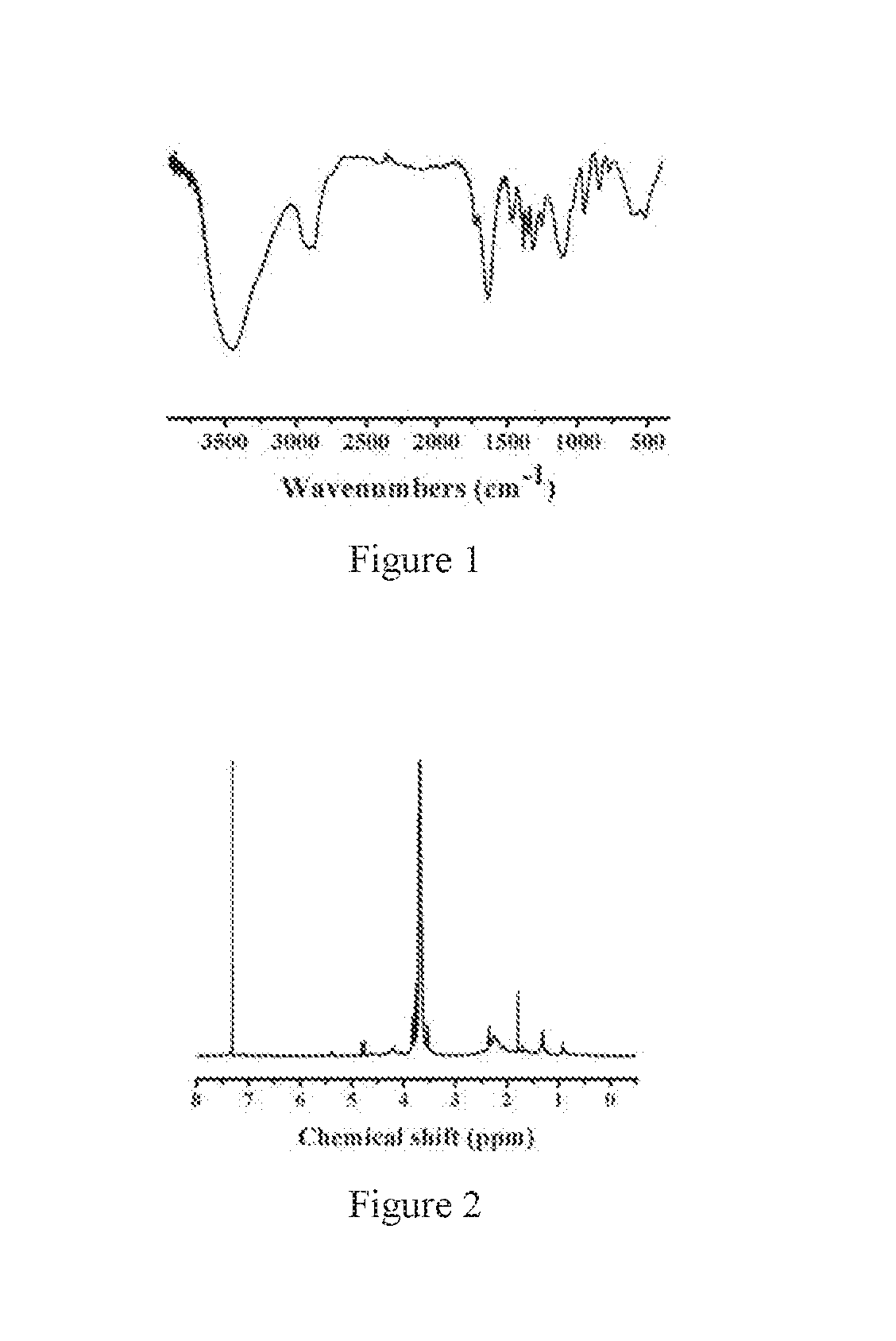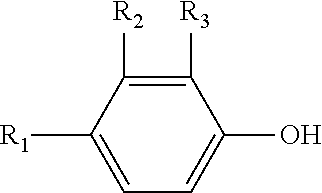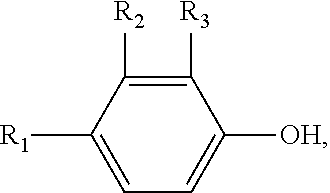Preparation Method of Polycarboxylate Superplasticizer with Carbon Dioxide
a technology of polycarboxylate and superplasticizer, which is applied in the field of preparation of polycarboxylate superplasticizer with carbon dioxide, can solve the problems of high steric hindrance effect, low utilization ratio of the mother liquor of the polycarboxylate superplasticizer, and inability to effectively utilize, etc., to achieve improved cost-effective and competitive advantage, simple production process, and improved adaptability to the concrete
- Summary
- Abstract
- Description
- Claims
- Application Information
AI Technical Summary
Benefits of technology
Problems solved by technology
Method used
Image
Examples
embodiment 1
[0026]step 1: preparing a polycarboxylate superplasticizer prepolymer: performing an oxidation-reduction radical polymerization of 10 mol acrylic polyethers (1000 g / mol), 20 mol 4-vinylphenol, 0.3 mol sodium bisulfite, 0.4 mol hydrogen peroxide and 0.3 mol thioglycolic acid under a nitrogen atmosphere at a temperature of 30° C., obtaining a novel polycarboxylate superplasticizer prepolymer with a molecular weight of 20000 g / mol after reacting for 1 hour; adjusting a pH of the Polycarboxylate superplasticizer prepolymer to 7 by adding a potassium hydroxide.
[0027]step 2: preparing a polycarboxylate superplasticizer: performing a Koble-Schmitt reaction between 10 mol of the polycarboxylate superplasticizer prepolymer and 10 mol carbon dioxide for 1.5 hours at 125° C. under an atmospheric pressure of 1 MPa to obtain a polycarboxylate superplasticizer.
embodiment 2
[0028]step 1: preparing a polycarboxylate superplasticizer prepolymer: performing an oxidation-reduction radical polymerization of 10 mol methyl acrylic polyethers (1000 g / mol), 30 mol 2-vinylphenol, 0.35 mol sodium formaldehyde sulfoxylate, 0.3 mol ammonium persulfate and 0.035 mol 2-mercaptopropionic acid under a nitrogen atmosphere at a temperature of 40° C., obtaining a novel polycarboxylate superplasticizer prepolymer with a molecular weight of 30000 g / mol after reacting for 1.5 hours; adjusting a pH of the polycarboxylate superplasticizer prepolymer to 8 by adding a sodium hydroxide.
[0029]step 2: preparing a polycarboxylate superplasticizer: performing a Koble-Schmitt reaction between 10 mol of the polycarboxylate superplasticizer prepolymer and 11 mol carbon dioxide for 1 hour at 130° C. under an atmospheric pressure of 0.9 MPa to obtain a polycarboxylate superplasticizer.
embodiment 3
[0030]step 1: preparing a polycarboxylate superplasticizer prepolymer: performing an oxidation-reduction radical polymerization of 10 mol 3-methyl-3-butene-1-polyethylene glyco, 40 mol 3-vinylphenol, 0.4 mol sodium metabisulfite, 0.5 mol sodium persulfate and 0.04 mol mercaptoethanol under a nitrogen atmosphere at a temperature of 30° C., obtaining a novel polycarboxylate superplasticizer prepolymer with a molecular weight of 40000 g / mol after reacting for 2 hours; adjusting a pH of the polycarboxylate superplasticizer prepolymer to 7 by adding a potassium hydroxide.
[0031]step 2: preparing a polycarboxylate superplasticizer: performing a Koble-Schmitt reaction between 10 mol of the polycarboxylate superplasticizer prepolymer and 12 mol carbon dioxide for 3 hours at 135° C. under an atmospheric pressure of 0.8 MPa to obtain a polycarboxylate superplasticizer.
PUM
| Property | Measurement | Unit |
|---|---|---|
| temperature | aaaaa | aaaaa |
| temperature | aaaaa | aaaaa |
| temperature | aaaaa | aaaaa |
Abstract
Description
Claims
Application Information
 Login to View More
Login to View More - R&D
- Intellectual Property
- Life Sciences
- Materials
- Tech Scout
- Unparalleled Data Quality
- Higher Quality Content
- 60% Fewer Hallucinations
Browse by: Latest US Patents, China's latest patents, Technical Efficacy Thesaurus, Application Domain, Technology Topic, Popular Technical Reports.
© 2025 PatSnap. All rights reserved.Legal|Privacy policy|Modern Slavery Act Transparency Statement|Sitemap|About US| Contact US: help@patsnap.com



